Abstract
Social media has become a part of the daily patterns of most individuals, forming a link between their online and offline experiences. This has made it the most common tool for communication and interaction among both individuals and businesses. Social media has been used in various ways in the Arab region. For instance, social media has also been used to elicit change in Yemen, Jordan and Morocco.
The protestors in these countries have made note of the significance of social media in addressing their issues that concern corruption and other disparities that oppress most of the population. Besides rallying people around social causes and political campaigns, social media in the Arab region has also been used to enhance citizen journalism and civic participation (Turkle, 2011).
This paper looks at the role of social media in the UAE, and its impact on the youth. In order to achieve this, this paper looks at various social media that are used by the youth in the UAE, what he youth see as the main benefits of social media, level of trust in social media, and the limitations that they face with regard to social media.
Introduction
Social networking has become the easiest way for individuals to communicate, whether they live in the same country, or across the world from each other.
Social networking refers to the “network of social interactions and personal relationships” that consists of devoted websites or applications, which permit users to communicate with each other through posting messages, pictures, and sharing comments, among others (Oxford Dictionaries, 2010).
The drastic impact that various social networking websites such as Facebook and MySpace have on people’s lives, and the way they communicate with one another, has made this topic relatively crucial.
People who are often addicted to such networks get fairly attached to it, causing them to communicate less with their families and replace the need for face-to-face interaction with their friends. This paper examines the effect of social media on the youth of the United Arab Emirates.
Literature Review
Studies show that the media is used for three primary reasons. First, it is used to bring meaning of the social world. Second, it informs people on how to act within a society. And third, it promotes pleasure and entertainment (Lenhardt & Madden, 2011). Based on these three elements that motivate media, it is apparent that various individuals are impacted in different ways by the media.
The audience has varied degree of reliance on the media based on their relationship with both the society, and the media. Studies show that the reliance of an audience on particular media gives that media a certain degree of authority over that audience. This theory is useful in the explanation of the impact of media during crisis, and will also be useful in the analysis of the impact of social media on the youth of the UAE (Boyd, 2007).
According to Al-Jenaibi (2011), social media has also been useful in developing forums for debate and interaction between governments and the communities, as well as, to enhance innovation and collaboration within the government. Social media has been used for various purposes including relaying information and cultural production, as well as, entertainment.
The rapid increase in the number of youth accessing various social media in the last decade has been driven by accessibility of the internet, especially through the mobile phones (Al-Jenaibi, 2011).
According to Al-Jenaibi (2011), the recent trrnsformations in both political and societal matters have been effected by the rapid adoption of social media as a driver for regional change, especially among the Arab youthm “netizens” and women. There has been increased involvement of both youth and women in political and civic actions owing to increased access to the internet.
At the same time, regional and international level policy makers have taken an active role in the regulation of access to the internet and the use of social media for political and societal activism.
The use of the Internet has grown rapidly in the Arab world due to the diversification of its uses from social neworking and entertainment, to more professional engagements between businesses, as well as, in enhancing the transparency and participatory objectives of governance models (Hinduja & Patchin, 2007).
Although some may believe that social networking has helped our youth in many ways, social networking also possesses several negative features that are not widely recognized. Since social networking involves the Internet, it is prone to several dangers that people can easily come across.
Online predators can easily gather certain information; therefore, people are more likely to get security attacks and are prone to hackers due to the personal information they reveal on these social networking communities (ProCon.org, 2012).
A popular example of this involves people who provide detailed information about themselves on MySpace, without having the option of limiting this information to only people they know/accept. In addition, cyber bullying is very common on such websites and can lead to decreased self-esteem and declining of grades (Hinduja & Patchin, 2007).
Research methodology
The various social media investigated in the study include blogs, micro blogs, social network service, video-sharing service, social bookmarking, and image sharing websites (Ito & Baumer, 2010). The quantitative study involved 30 surveys that were randomly distributed in a population of youth aged between 15 and 30 years from different parts in the seven regions of the United Arab Emirates.
The mean age of the sample used was 21 years, with most of the respondents pursuing tertiary education. However, all of the respondents selected had graduated from high school. Reliability of the survey questions was enhanced by rewording the questions in various ways in order to identify the stability of the responses provided.
No inconsistencies were noted in the retests; hence, all 30 surveys were used in analysis of the research question. The survey was administered online, and comprised questions that sought to measure the emotional and social well-being of the youth.
Some of the questions inquired about their state of happiness or sadness compared to other people who did not have access to social networking, whether they had many friends or were lonely at times, and more questions along those lines.
Findings
Face to face communication
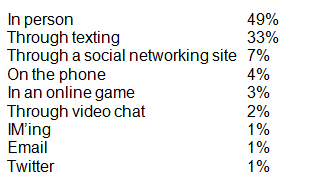
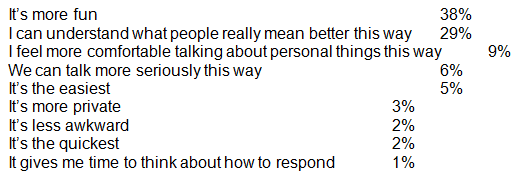
The study revealed that despite the prevalence of the use of technology among the youth, most of them still preferred to communicate face to face. Text messaging came in second and the use of social network s third.
Social and digital communication

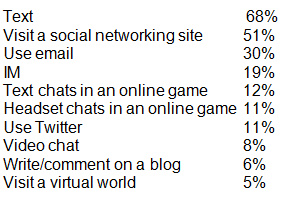
The sample was also surveyed for their use of social and digital communications. Texting was observed as a common trend among 87% of the sample, followed by social networking and emailing. These three activities were also the most prevalent on a daily basis, in the same order.
Social networking
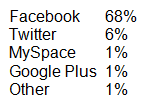
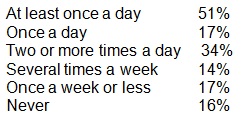

This analysis of the use of social networking sites showed that it forms a crucial part of the youth’s lives, since more than half of the sample stated that they visit a social site on a daily basis. About 75% of the youth indicated that they were familiar with the privacy policies on social networking sites.
Social networking and social-emotional well-being
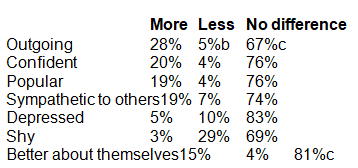
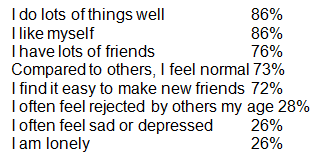
Most of the study group indicated that the use of social networking did not influence their social or emotional well being. Some indicated that social networking had a positive effect on them, like for those who were less shy due to social networking, or more outgoing, and more confident.
Social media and relationships



Many youth feel that social media has been useful in enhancing their relationships with both related and non-related people. Conversely, the sample stated that social networking impacted on the time that they spent with their friends or other people in person.
Hate Speech Online

One of the impacts of social media that has not been explored is the use of social media to spread hate speech. The study noted that about half of the sample had encountered various forms of discriminatory content in the various social media indicated earlier. About 25% of the sample also indicated that they encountered hateful content on various social networks on a regular basis.
Addiction and the desire to unplug

Table 15: Frustration with Gadgets and the Desire to Unplug.
Strongly or somewhat agree that they:
- Get frustrated with friends for texting or social networking when hanging out together 45%.
- Wish they could unplug for a while sometimes 43%.
- Sometimes wish they could go back to a time when there was no Facebook 36%.
- Wish their parents spent less time with cell phones and other devices 21%.
The study revealed that a considerable proportion of the youth could not operate without a cell phone. A considerable number stated that they occasionally felt the need to do away with social networking. This was especially evident in the frustration that most youth expressed due to the distraction that is caused when they were hanging out with their friends.
Conclusion
During the study, it was identified that the most common types of social media were social networks like Facebook, video-sharing websites like YouTube, and micro-blogging sites like Twitter, among others. The respondents in the study showed high familiarity with a variety of social media, including the privacy policies, and the potential ethical and practical shortcomings.
Social networking was identified to have a positive impact on the youth in terms of boosting their confidence and level of interaction. Social media also served as a reliable means of conveying social issues in the UAE. Further research on the topic can be narrowed down to the impact of social media on women in the UAE.
In addition, more research can be conducted to draw a complete picture of the merits, demerits, and possibilities of social media that have made the UAE one of the regions in the world with the highest internet migration rates.
References
Al-Jenaibi, B. (2011). The Use of Social Media in the United Arab Emirates – An Initial Study. European Journal of Social Sciences, 23(1), 87-96.
Boyd, d. (2007). Why youth (heart) social network sites: the role of networked publics in teenage social life. Youth, Identity, and Digital Media, 119-142.
Hinduja, S., & Patchin, J. (2007). Offline consequences of online victimization: school violence and delinquency. Journal of S. Violence, 6(3), 89–112.
Ito, M., & Baumer, S. (2010). Hanging out, messing around, and geeking out: Kids living and learning with new media. Cambridge, MA: MIT Press.
Lenhardt, A., & Madden, M. (2011). Teens, kindness and cruelty on social network sites. Washington, D.C.: Pew Internet and American Life Project.
Oxford Dictionaries. (2010). Social network. Web.
ProCon.org. (2012). Social Networking. Web.
Turkle, S. (2011). Alone together: Why we expect more from technology and less from each other. New York: Basic Books.